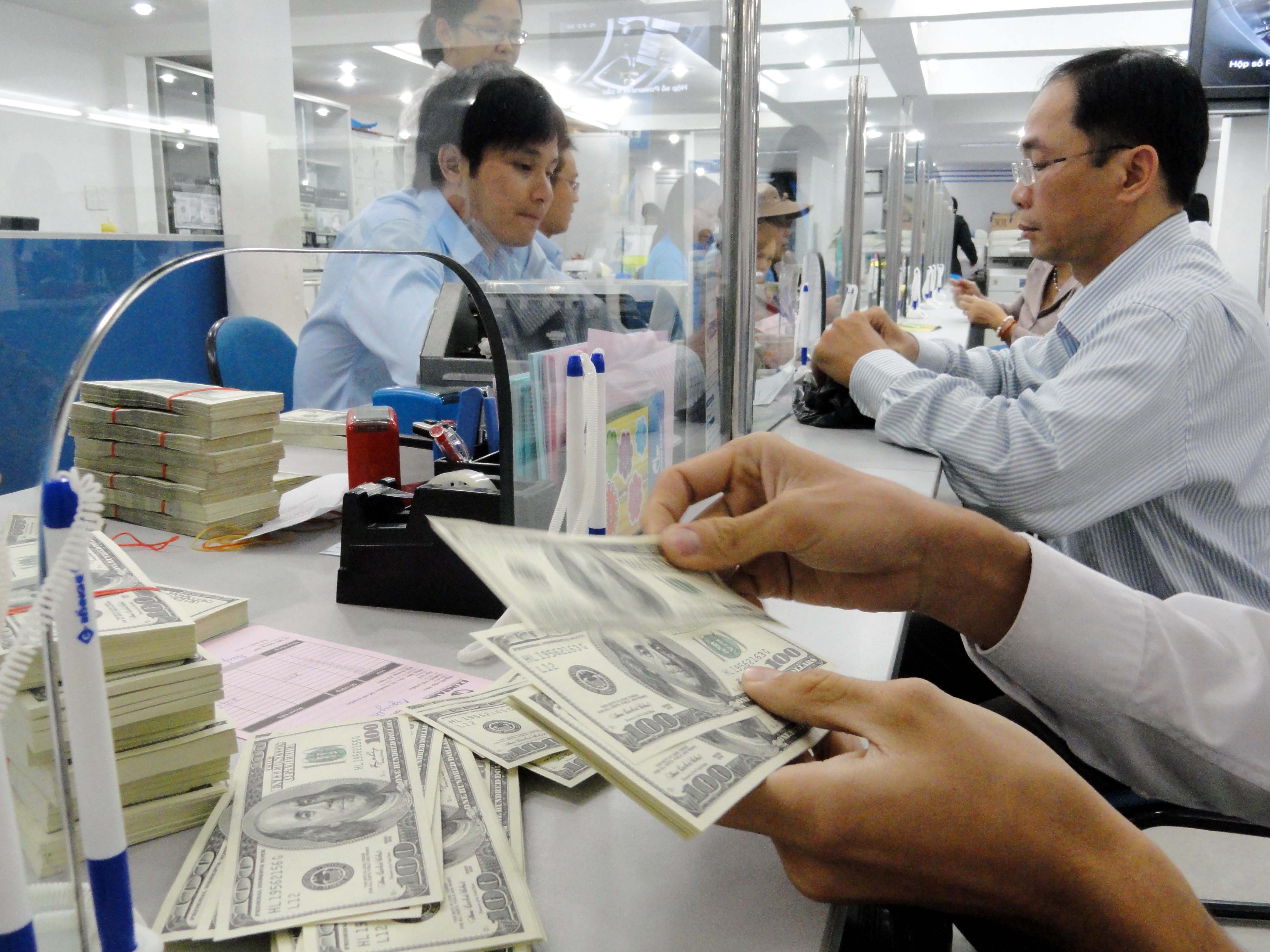The State Bank of Vietnam (SBV), the country’s central bank, on Thursday devalued the Vietnamese dong by another one percent after already doing so earlier this year.
>> An audio version of the story is available here
The SBV decided to pull the trigger and allowed the local currency to lose value against the greenback following mounting pressure from the dollar’s appreciation both in the banking system and in the free market starting in March this year, which reappeared earlier this week.
With the new decision from the SBV, the interbank average foreign exchange rate between the dong and U.S. dollar has increased from VND21,458 to VND21,673 per dollar.
The decision was announced this morning in the context of pressure on the dong devaluation building up again after the six-day holiday ended on Sunday and the official figure of a US$3 billion trade deficit in January-April was announced by Vietnamese authorities.
The pressure first appeared at local banks on Monday, and spread to the black market on Wednesday, bringing the unofficial rate to VND21,730 per dollar.
The SBV said in a statement that recent pressure on the dollar/dong rate was "psychological" and "in market expectations," adding its latest move was to help meet socio-economic targets and cope with negative impacts from global markets, Reuters reported.
With the new adjustment, the quotes offered by local banks will be within the range of VND21,456-21,890 per dollar, as the lenders are allowed to let the greenback fluctuate one percent higher or lower than the official rate set by the central bank.
"The market had expected this change right after the government released data on the trade deficit," a money market dealer at a Vietnamese bank in Ho Chi Minh City told Reuters.
"The (market) expectation is more depreciation as the dong is down just two percent while other currencies in the region have fallen 4-5 percent now," he added.
The central bank took a similar move on January 6, shifting the midpoint for trading the dong from VND21,246 per dollar, a level the SBV set last June, to VND21,458 per dollar.
As the SBV has devalued the Vietnamese dong by another one percent against the greenback, there is no more room for it to maneuver its foreign exchange policy from now to the end of this year.
Foreign exchange policy to be consistent?
The SBV late last year confirmed its consistency in managing the foreign exchange policy so that the dong will not be devalued by over two percent against the greenback in 2015, as the central bank successfully did in 2014 when the dollar was allowed to appreciate by only 1.1 percent over the dong.
SBV Governor Nguyen Van Binh reconfirmed the policy for 2015 in the middle of January, stating that the central bank was buying foreign currencies from the local market to increase the national foreign exchange reserves, a move it had stopped for five months then.
The measure was taken after the exchange rate between the Vietnamese dong and the U.S. dollar was stabilized, following the SBV devaluing the dong by one percent to stop market expectation of further depreciation, Binh added.
With national foreign exchange reserves at over $35 billion, this helps the central bank to make any necessary intervention at any time it wants to stabilize the market, Binh asserted.
In a newly published study, the Vietnam Institute for Economic Research and Policy (VEPR) under the National University system in Hanoi estimated that the current foreign exchange reserves reach $36.7 billion.
In December 2014, the central bank sold more than $1 billion to stabilize the local foreign exchange market.
But VEPR forecast in the study published on its website on April 27 that the next devaluation would only come by the end of this year, given ample reserves, an idea shared by the Vietnam business of the Hong Kong and Shanghai Banking Corporation in its macro-economic report for the Southeast Asian country, also released late last month.
Like us on Facebook or follow us on Twitter to get the latest news about Vietnam!





















































